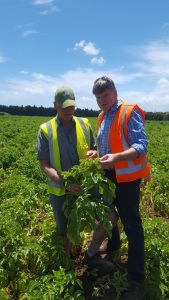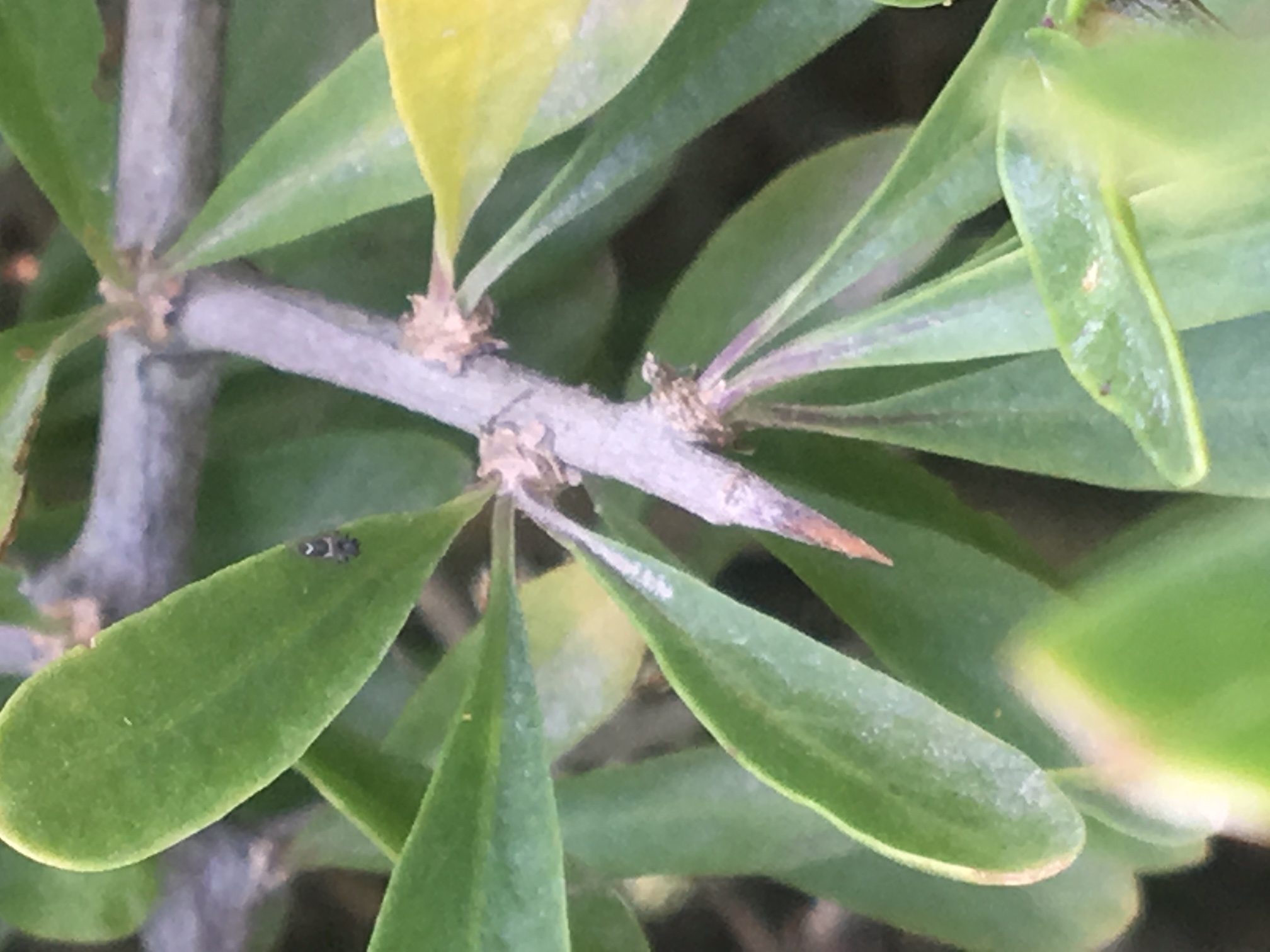Reflection: Study trip to New Zealand highlights lessons learnt from TPP
New Zealand has been battling the tomato potato psyllid (TPP) for over 10 years. In December 2017, as part of his role as AUSVEG National TPP Coordinator, Alan Nankivell undertook a six-day study trip across the ditch to examine the psyllid management practices that growers have put in place. Project MT16018 is a strategic levy investment under the Hort Innovation Vegetable, Fresh Potato and Potato Processing Funds.
In 2006, New Zealand first detected the tomato potato psyllid (TPP; Bactericera cockerelli) on the North Island not far from Auckland. Initially there was no Candidatus Liberibacter solanacearum (CLso) detected. After two years, TPP was found on the South Island and it has since spread to all parts of New Zealand.
CLso was eventually detected about two years after the TPP incursion. This bacterium is associated with TPP and causes zebra chip disease in potatoes. The first response from potato growers was to spray extensively with strong chemicals in an attempt to eradicate or at least control TPP. This approach persisted as TPP continued to spread. After several years of a strong spray approach, growers became aware that TPP resistance was growing and their properties experienced a significant loss of predator insects. Yields also continued to decline and costs of spraying continued to rise. The impact was that some potato growers chose to leave the industry.
Building knowledge
In response to industry feedback, initial research conducted by Plant & Food Research New Zealand (PFR) focused on identifying the best pesticides to use. There was work completed on CLso, which identified how little was known about it.
There were calls for further work on understanding the role of hosts and just how CLso is transmitted, where it affects the plant and to understand the haphazard nature of its impact on plants and tubers.
With 11 years’ experience of living with TPP and CLso, the New Zealand potato sector has developed a strong understanding of how to manage TPP by applying the knowledge gained, but more importantly it has been honing its understanding of what further knowledge is required to better understand and manage both the pest and the bacterium across the supply chain. Seed production has been challenging. The introduction of fine nets to keep TPP out of first-generation seed appears to have had good results in the field. However, the cost of netting large areas is prohibitive and not realistic from a management perspective.
Where is the New Zealand industry now?
- It is still producing potatoes and growing the industry!
- Growers and industry members acknowledge that there is no one single approach to field management, however the “essential” requirement is for TPP and CLso monitoring with traps and field scouting. The build-up of TPP will vary according to seasonal and locational variations.
- Knowing where TPP is and where it isn’t and the size of psyllid populations assists growers in making informed decisions about the management strategies they employ.
- Factors that need to be taken into account include day temperatures, TPP lifecycle, encouragement of TPP predators and careful use of spray pesticides, starting “soft” and increasing as TPP numbers increase.
- If possible, plant earlier varieties that mature before TPP is a problem.
- Treat every field as unique, applying the principles that every field has different location characteristics.
- Keep detailed records of trap numbers, what type of spray, how much and when it was used, as well as the fertiliser levels, water usage and planting and harvesting times. The feedback from growers was that this information, kept all in one place, has assisted them greatly in gaining control of the pest.
- On the processing side, technology has assisted with reducing the discoloured CLso potato product getting through to consumers, which has resulted in an increased cost of production due to diseased losses. New Zealand processors remain focused on reducing losses in their feed stock.
- As part of the supply chain, seed potato management is seen as essential. As a general rule, there is no seed used past fourth-generation, however there is no hard and fast ruling on this at this stage.
- New Zealand growers acknowledged that the introduction of TPP (while frustrating) has brought their industry together, and there is greater sharing of information among growers and between growers and processors.
- As one grower explained, the impact of TPP has provided growers with the opportunity to become more professional in their approach to growing potatoes.
- Growers are increasing the use of independent agronomists to advise on management strategies, not just to sell spray product.
- Research has moved from any sprays to “soft” ones.
- There is ongoing research on the use of predators.
- There is initial research on TPP/CLso resistant varieties.
- There is research on understanding the way CLso spreads in potato plants and tubers, which is funded by Hort Innovation. This is being conducted in collaboration with AgriBio in Victoria, SARDI in South Australia and Plant & Food Research New Zealand (PT17000).
In conclusion, there is much that we in Australia can learn from our industry friends in New Zealand. They were generous with their time and I see there is great benefit in growers visiting New Zealand and seeing where they have come in their journey with TPP/CLso. Their experience will assist the Australian industry in avoiding the same mistakes, and learning from their experience.
There may well be collaborative research opportunities (especially around the understanding of CLso) that can be developed in the coming months and opportunities for grower visits to observe the way the New Zealand potato industry has learnt to live with TPP/CLso.
In particular thanks to Callum Fletcher, Peter Wright, Rebekah Frampton and Duncan McLeod for arranging meetings with scientists, growers and processors. A special thanks to potato growers and processors who funded the trip to New Zealand and provided me with the issues they are seeking answers for.
Find out more
For more information about the project, please visit the AUSVEG website.
Tomato potato psyllid (TPP) National Program Coordinator has been funded by the fresh potato, potato processing and vegetable research and development levies and contributions from the Australian Government.
Project Number: MT16018


